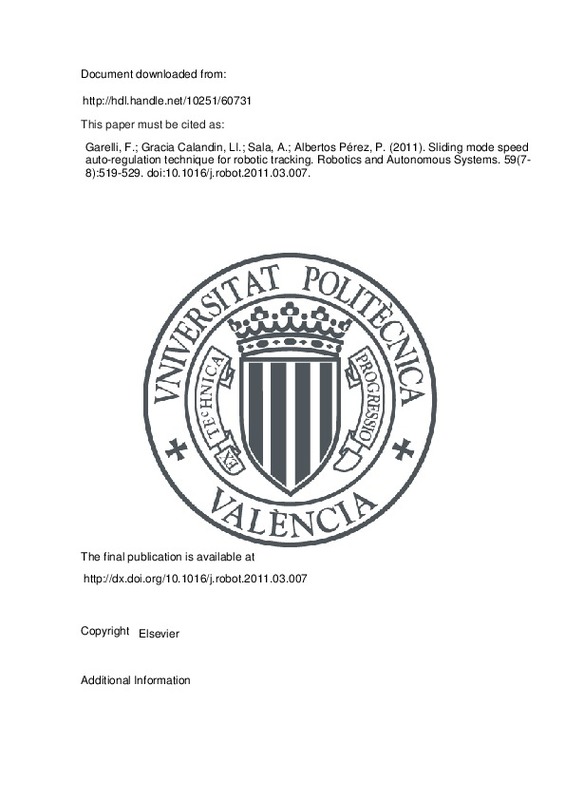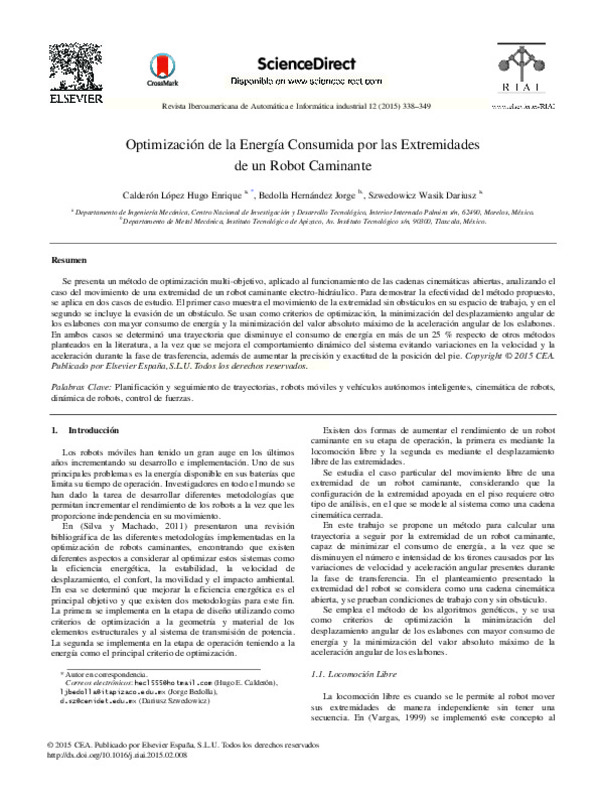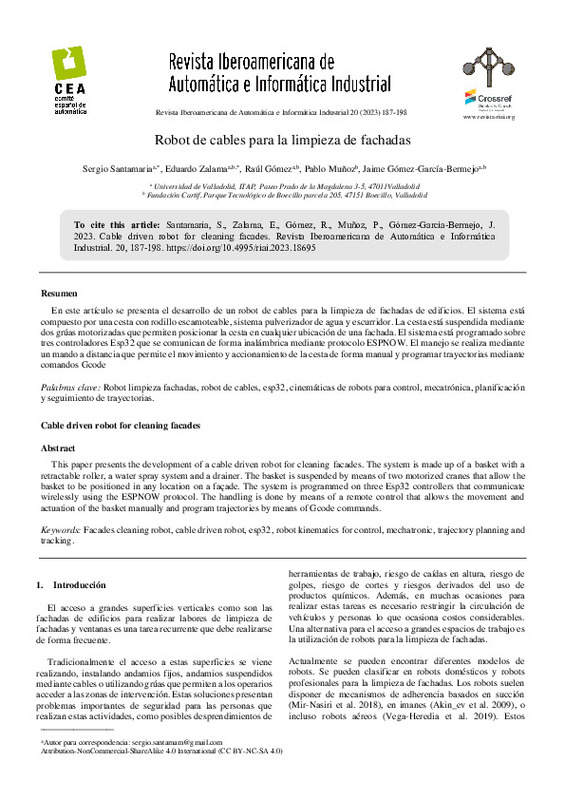Garelli, F.; Gracia Calandin, LI.; Sala, A.; Albertos Pérez, P. (2011). Sliding mode speed auto-regulation technique for robotic tracking. Robotics and Autonomous Systems. 59(7-8):519-529. https://doi.org/10.1016/j.robot.2011.03.007
Por favor, use este identificador para citar o enlazar este ítem: http://hdl.handle.net/10251/60731
|
Título:
|
Sliding mode speed auto-regulation technique for robotic tracking
|
|
Autor:
|
Garelli, Fabricio

 Gracia Calandin, Luis Ignacio
Gracia Calandin, Luis Ignacio

 Sala, Antonio
Sala, Antonio
 Albertos Pérez, Pedro
Albertos Pérez, Pedro
|
|
Entidad UPV:
|
Universitat Politècnica de València. Instituto Universitario de Automática e Informática Industrial - Institut Universitari d'Automàtica i Informàtica Industrial
Universitat Politècnica de València. Departamento de Ingeniería de Sistemas y Automática - Departament d'Enginyeria de Sistemes i Automàtica
|
|
Fecha difusión:
|
|
|
Resumen:
|
In advanced industry manufacturing involving robotic operations, the required tasks can be frequently formulated in terms of a path or trajectory tracking. In this paper, an approach based on sliding mode conditioning of ...[+]
In advanced industry manufacturing involving robotic operations, the required tasks can be frequently formulated in terms of a path or trajectory tracking. In this paper, an approach based on sliding mode conditioning of a path parametrization is proposed to achieve the greatest tracking speed which is compatible with the robot input constraints (joint speeds). Some distinctive features of the proposal are that: (1) it is completely independent of the robot parameters, and it does not require a priori knowledge of the desired path either, (2) it avoids on-line computations necessary for conventional analytical methodologies, and (3) it can be easily added as a supervisory block to pre-existing path tracking schemes. A sufficient condition (lower bound on desired tracking speed) for the sliding mode regulation to be activated is derived, while a chattering amplitude estimation is obtained in terms of the sampling period and a tunable first-order filter bandwidth. The algorithm is evaluated on the freely accessible 6R robot model PUMA-560, for which a path passing through a wrist singularity is considered to show the effectiveness of the proposal under hard tracking conditions. © 2011 Elsevier B.V. All rights reserved.
[-]
|
|
Palabras clave:
|
Input saturation
,
Multivariable systems
,
Robotic tracking
,
Sliding mode
,
Amplitude estimation
,
Autoregulations
,
Conventional analytical
,
Distinctive features
,
First-order filters
,
Input constraints
,
Lower bounds
,
Online computations
,
Parametrizations
,
Path tracking
,
Priori knowledge
,
Robot model
,
Robot parameters
,
Sampling period
,
Sliding mode conditioning
,
Sliding modes
,
Sufficient conditions
,
Tracking speed
,
Trajectory tracking
,
Robotics
,
Robots
|
|
Derechos de uso:
|
Reserva de todos los derechos
|
|
Fuente:
|
Robotics and Autonomous Systems. (issn:
0921-8890
)
|
|
DOI:
|
10.1016/j.robot.2011.03.007
|
|
Editorial:
|
Elsevier
|
|
Versión del editor:
|
http://dx.doi.org/10.1016/j.robot.2011.03.007
|
|
Código del Proyecto:
|
info:eu-repo/grantAgreement/GVA//PROMETEO08%2F2008%2F088/ES/Nuevas Estrategias para el Diseño de Sistemas de Control Multivariable/
info:eu-repo/grantAgreement/MICINN//DPI2008-06731-C02-01/ES/IDENTIFICACION Y CONTROL DE SISTEMAS NO LINEALES Y LTV MEDIANTE MULTI-MODELOS TAKAGI-SUGENO Y POLINOMIALES/
info:eu-repo/grantAgreement/UNLP//111127/
info:eu-repo/grantAgreement/CONICET//PIP 112-200801-0/
info:eu-repo/grantAgreement/ANPCyT//PICT-2007-00535/
|
|
Agradecimientos:
|
This research is partially supported by DISICOM project PROM-ETEO 2008/088 of Generalitat Valenciana (Spain), research project DPI2008-06731-C02-01 of the Spanish Government (Spain), Technical University of Valencia (Spain), ...[+]
This research is partially supported by DISICOM project PROM-ETEO 2008/088 of Generalitat Valenciana (Spain), research project DPI2008-06731-C02-01 of the Spanish Government (Spain), Technical University of Valencia (Spain), and the Argentinian Government (UNLP 111127, CONICET PIP 112-200801-0, ANPCyT PICT 2007 00535).
[-]
|
|
Tipo:
|
Artículo
|







![[Cerrado]](/themes/UPV/images/candado.png)





